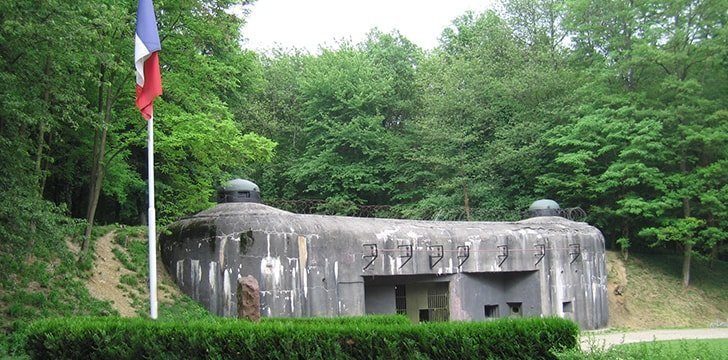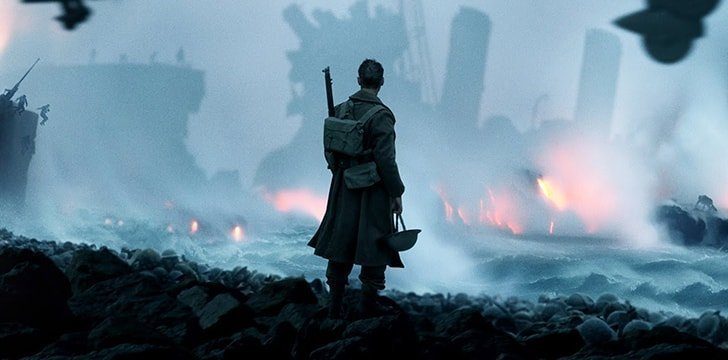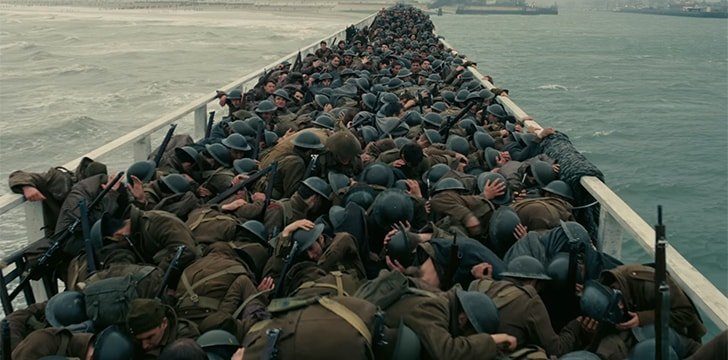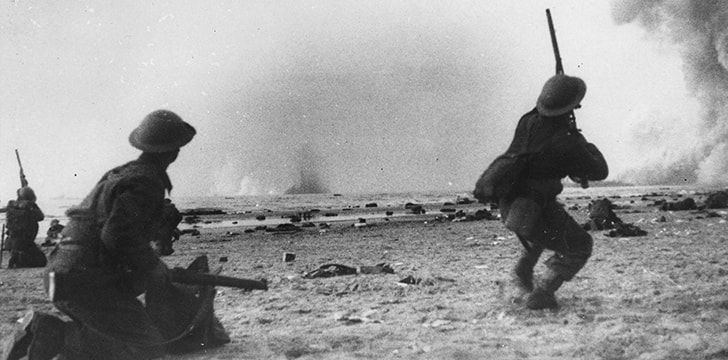Christopher Nolan’s epic war film Dunkirk catapulted the story of the Dunkirk evacuations into the collective consciousness with its release and critical acclaim.
As anyone who has seen the film will know, the German Army’s rapid sweep through Europe culminated in the humiliating defeat of the combined British and French forces.
The remaining members of the British Expeditionary Force were trapped at Dunkirk in desperate need of rescue.
Churchill had planned for and expected only 30,000 troops to return to British shores.
However, much to his surprise and delight, the combined evacuations efforts of the Royal Navy and British civilian ships helped save just shy of 350,000 allied troops.
This is the story widely thought of when people speak of the Dunkirk Evacuations.
But one story that’s rarely told is that of the Siege of Lille, a battle taking place in tandem with the evacuations that saw some 40,000 French troops hold off wave after wave of advancing elite Wehrmacht soldiers.
Without the efforts of these brave French soldiers, Churchill’s grim estimate might have become a reality.
The Phony War and the Maginot Line

After the Allies’ declaration of war against Germany following their invasion of Poland, there was a period known as The Phony War.
During this time, the Allies didn’t do much of anything which gave Hitler the time he needed to prepare his ground invasion of France.
Along France’s border with Germany was the Maginot Line. A line of fortifications created to deter a German invasion, the Maginot Line was – for all intents and purposes – impenetrable.
However, the Maginot Line only went up to the Belgian border, not past it.
What’s more, the French had left the Ardennes, an area full of thick forests and rolling hills, unprotected.
The French and British leaders believed the Ardennes was a naturally impenetrable area. This was not an opinion shared by the German high command, though.
Hitler launched his troops into Belgium, dodging the Maginot Line, and the Allies raced in at breakneck pace to meet him.
However, the Germans had a trick up their sleeve: Blitzkrieg.
Lightning War

In early May 1940, 50 Wehrmacht divisions moved through the Ardennes and behind the Allied lines.
With lightning speed, they encircled and trapped the Allied forces, caroling the last pocket of resistance at Dunkirk.
By May 28th, over 400,000 Allied troops were trapped at Dunkirk, waiting for an evacuation that may never come, whilst the Axis forces closed the net.
As the Allies continued to flood to the beaches of Dunkirk, the French IV Corps and V Corps fought a fierce street-to-street battle with the Germans to keep the stranded soldiers on the beaches safe.
The Siege of Lille

The French IV Corps under the command of General Aymes, and the V Corps under the command of General Altmayer were blocking all routes into Dunkirk.
Fighting against 4 infantry divisions and 3 armored divisions, the 40,000 French soldiers were dwarfed by the 160,000 highly-trained German soldiers crashing in against them.
As the Dunkirk evacuations were underway, German troops constantly probed and pushed against the French lines.
The French Army fought house-to-house in a sturdy retreat through the Lille suburbs – still occupied by many French civilians.
Over 4 full days of fighting, the Allies evacuated nearly all their men at Dunkirk whilst the French army stood strong.
At midnight, on May 31st, after the last evacuation ship had left the French coast and with their food and ammunition running low, the commanding officers of the French troops negotiated surrender with the German commander General Kurt Waeger.
An Honorable Surrender

On June 1, 1940, 35,000 French troops and some remaining British troops surrendered to the Germans at La Grand Place.
General Waeger, more than impressed by the tenacity of the French soldiers, allowed them the honors of war, and the French garrison paraded through the Grand Place as the German troops stood to attention, saluting their defeated foes.
For this honor, General Waeger was severely reprimanded by the German high command.
A Gallant and Splendid Contribution

Churchill later went on to describe the Siege of Lille as a “splendid contribution” to the Allied war effort, due to the way in which it delayed the German advance for four whole days, allowing the British Expeditionary Force to escape Dunkirk.
Diverting about seven German divisions for four whole days, the French Army’s efforts at the Siege of Lille undoubtedly helped the British in their upcoming campaign, as well as providing a gigantic morale boost for the British forces.
The French get a bad rep for surrendering, but the Siege of Lille goes to show that surrendering can come with great honor.

















